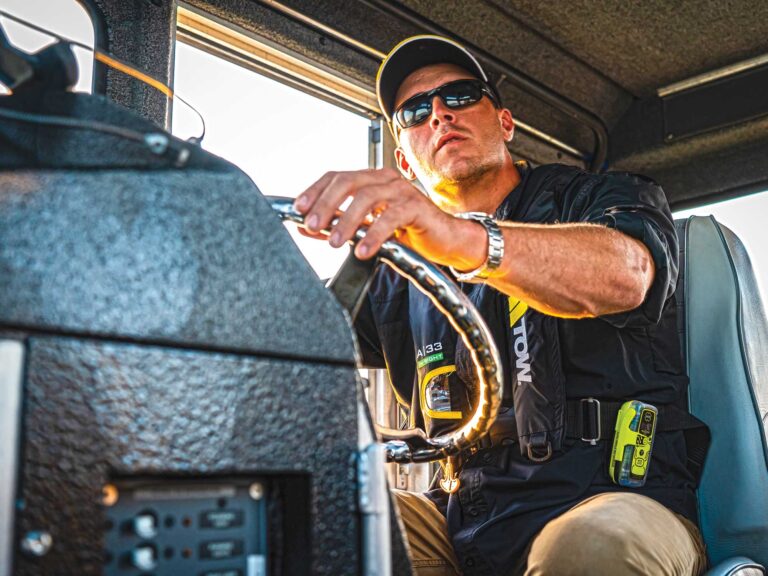For tips on how you can support the SeaGrass Grow campaign — and avoid damaging sea grass yourself — visit boatingmag.com/seagrass.
Dirt needs things to hold it down. Cut away the vegetation that lets land “flow with milk and honey” and you get a desert. Plow vast tracts of prairie grass into bare earth, add a little dry spell and you get the Dust Bowl that preceded the Great Depression. But the costs of plowing up the bottom of the ocean are being tabulated only in recent years.
Kiel Johnson, a marine biologist assisting the SeaGrass Grow campaign, can tell you how quickly an apparently innocuous propeller scar in a grass bed can turn into a vast underwater Sahara. He can also give you the price tag in dollars and time for putting it back.
“One prop scar in a high current area can erode away acres of grass in just a few months,” he said. The combination of current and the likelihood that another boat will hit the same area means nature can take as long as 10 years to grow that grass flat back. But Kiel has a better plan.
“We can grow one back in about 18 months.” Kiel’s fighter-jock cockiness contrasts with what one might expect from a studious biologist, but his passion for putting earth back the way man found it is hard to resist.
Restoring grass meadows costs thousands of dollars per acre. Boaters’ insurance pays for some restoration on reported groundings. But some groundings are reported by an observer, not the boater, and the cost for ignoring damage may be highest of all if you consider a citation for leaving the scene.
“People have gotten a lot smarter,” said Doug Barrie, general manager of World Wide Sportsman, a Bass Pro Shops store in Islamorada, Florida. “They realize if you wreck the grass, you wreck the food pyramid.”
Mitigation monies are often paid by contractors to seed grass flats in certain barren areas to make up for dredging for marinas or other private or municipal development. A third source of revenue is the volunteer outreach program in which we participated.
Columbia Sportswear and Bass Pro Shops are two stakeholders who serve constituents most concerned about sea grass: anglers. Both companies observe that the easiest way to maintain grass meadows is to learn how to navigate them without damaging them. Together the companies initiated a product line of sportswear in which proceeds would be contributed to the Ocean Foundation for its SeaGrass Grow campaign to assist Kiel and other biologists and volunteers in restoring damaged grass and in educating boaters on how to avoid destroying it.
“We’ll contribute money to the Ocean Foundation based on retailer purchases from companies like Bass Pro Shops,” said Scott Willis, corporate relations executive at Columbia. “Bass Pro will contribute a portion as well.”
Clothing available through Bass Pro Shops in Miami and Fort Lauderdale, Florida, and World Wide Sportsman will help fund the program through an advocacy product-marketing campaign.
SeaGrass Grow Campaign
Clothing from the SeaGrass Grow campaign will be widely available at sportswear retailers in 2011. Bass Pro Shops and Columbia Sportswear were the first to partner in presenting Save Our Seagrass clothing, and a selection is available from World Wide Sportsman in Islamorada and Bass Pro Shops stores in Miami and Fort Lauderdale. To learn more about the program, visit columbia.com/seagrass.









